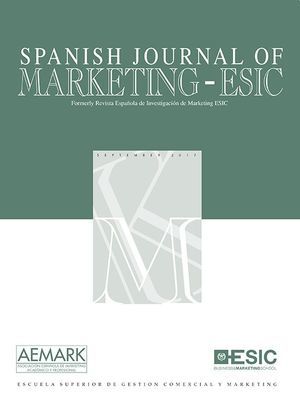En este trabajo propone un marco conceptual de estudio de las redes sociales que toma como referente el modelo de comunidad de marca de Algesheimer, et al. (2005), y se extiende este modelo proponiendo antecedentes de la identificación del usuario con la red social (grado de vinculación con la red, entretenimiento con la red, reconocimiento social y utilidad percibida en la red) y consecuentes del compromiso con la red social (boca-oído electrónico y comportamiento hacia la marca). El modelo planteado se contrasta empíricamente para los jóvenes universitarios de una ciudad española y se propone un modelo alternativo con interesantes implicaciones para la gestión, como el papel clave del entretenimiento en la identificación del usuario con su red social y consecuentemente en su compromiso con la red y en la respuesta posterior a actividades promocionales de la marca en la red social.
This study proposes a conceptual framework for research on social networking sites by extending Algesheimer et al's. (2005) social influence model on brand community. The extension includes antecedents of users’ identification with the site (i.e. degree of network-person connectivity, entertainment, social recognition, and perceived utility) as well as consequences of commitment to the site (i.e. electronic word-of-mouth and brand behavior). The proposed model is empirically validated by the data from student sample of a large Spanish University, which resulted in an alternative model. Our findings provide interesting managerial implications: it is entertainment that plays a pivotal role in strengthening users’ identification with the site, their resulted commitment to the site, and finally behavioral responses to brand promotions on the site.
El estudio ha sido realizado con el apoyo financiero prestado por el proyecto de investigación perteneciente al Plan Nacional de i+D+i 2008-2011 (código: ECO2008-01557). Los autores también agradecen el proyecto de cooperación interuniversitario de UAM-Grupo Santander por la inspiración de la idea.
Profesores de la Universidad Autónoma de Madrid. Facultad de CC. Económicas y Empresariales. Campus de Campoblanco. 28049 Madrid. Direcciones electrónicas de contacto





